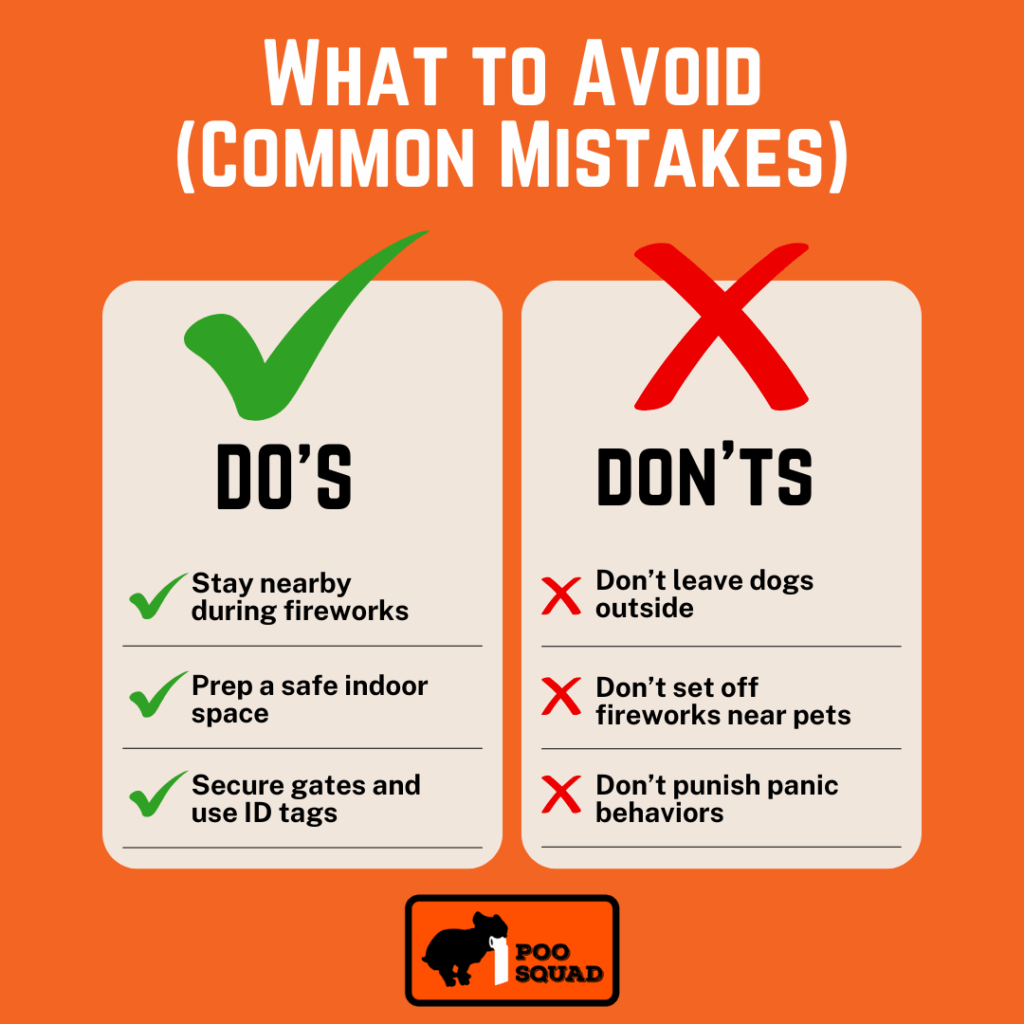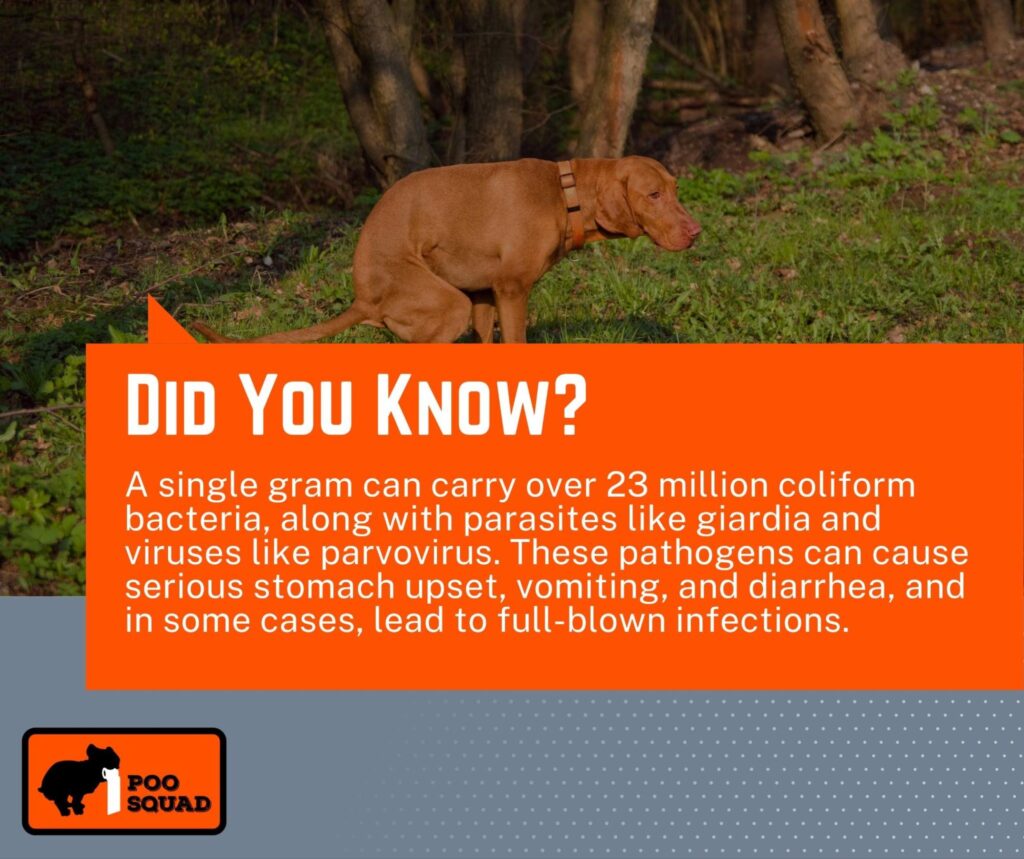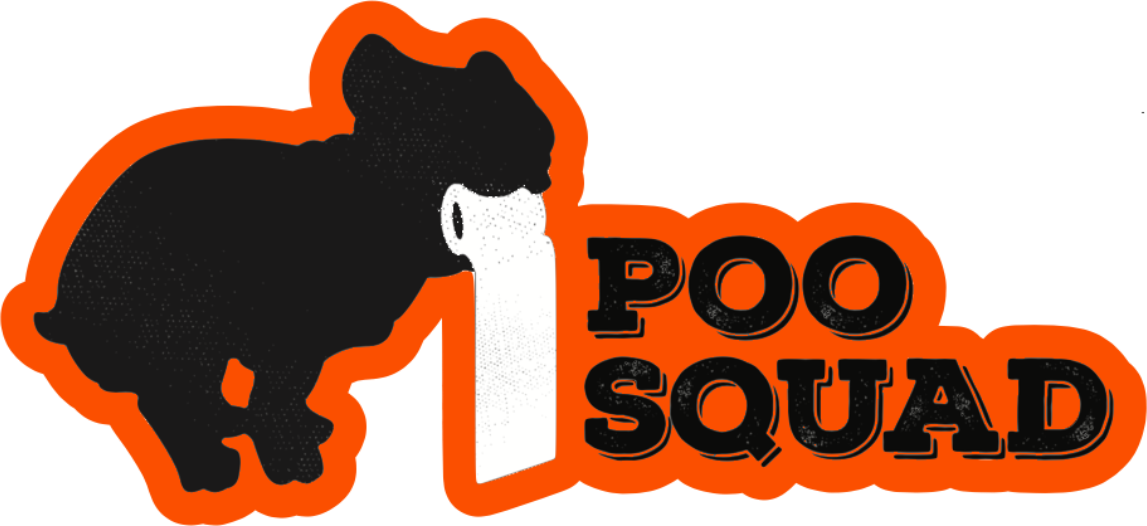How to Dispose of Dog Poop Safely and Legally
To dispose of dog poop safely, bag it and place it in a sealed outdoor trash bin, flush it (if your municipality allows), or use a dog waste digester. Avoid composting with food, burying it, or tossing it in storm drains; those methods spread pathogens and harm the environment.’

Why Proper Disposal of Dog Poop Matters More Than You Think
There’s a common backyard myth that dog poop works like fertilizer. Some say, ‘Leave it. It’ll break down.’ That would be great if it were true. But dog waste doesn’t act like compost. It’s toxic. One gram can carry over 23 million bacteria, including harmful ones like E. coli, Giardia, and parvo.

Letting it sit too long doesn’t just smell bad. It kills grass, seeps into the soil, and rides rainwater straight into local waterways. That means your pup’s bathroom habits could be helping fuel algae blooms in the neighborhood pond or bringing pathogens into places they don’t belong.
Even the bag doesn’t always solve the problem. If tools and shoes aren’t cleaned between yards, or if the waste is tossed carelessly, bacteria can still spread. That’s why the better services out there sanitize gear between every stop and send gate-closed photo confirmations, not just to look professional, but because health is on the line.
Leaving dog poop behind or mowing over it may seem minor, but it’s risky. In busy homes or with multiple dogs, those risks multiply fast. Clean, secure disposal is the only option that keeps your yard, your family, and your pets safe.
Method #1 – Throwing Dog Poop in the Trash (Still the Most Common)
For most dog owners, the trash can is the go-to destination. It’s quick, it’s easy, and it doesn’t require a science degree. But there’s a right way and a very wrong way to do it.
What Works
The gold standard starts with bagging the poop in something airtight, plastic or a biodegradable bag if you prefer to be a little kinder to the environment. On hot days, double-bagging goes a long way to avoid that midweek funk every time you lift the lid.
Always toss it deep into a secured bin with a tight-fitting lid to keep out flies, smells, and whatever raccoon has been eyeing your trash like it’s a buffet.
Bonus move? Keep a small bin near the backyard if you scoop regularly, just make sure it gets emptied every week. That kind of consistency is what turns a dreaded chore into a non-event.
What to Avoid
Throwing poop into someone else’s trash can? Bad idea. Not just because it’s rude, some cities consider it illegal. Even if it’s technically legal, the stink you’ll get from the neighbor next door won’t be worth it.
Leaving the bag on top of a garbage pile without sealing it inside the bin is another classic move that backfires. It turns your alley into a petri dish and invites everything from maggots to neighbor complaints.
And those biodegradable bags that promise to disappear in a landfill? Most don’t. Without light, oxygen, and movement, they’ll sit there about as long as a regular plastic bag. So, unless your city composts pet waste (rare), go for containment over composting when using the trash route.
Some folks avoid all this by outsourcing the mess altogether. Services that pick up, dispose of it offsite, and text you when the job’s done? That’s the kind of hands-free solution that gets popular fast and avoids triggering your neighbors’ trash can drama.
Method #2 – Flushing Dog Poop Down the Toilet (Where It’s Allowed)
Believe it or not, flushing dog poop down the toilet is one of the cleanest disposal methods out there, if your local regulations allow it and you’re not on a septic system.
What Works
The Environmental Protection Agency gives this one a thumbs-up for homes connected to municipal sewage.
Why?
Because the waste goes exactly where human waste goes, straight to treatment, handled by the same infrastructure. No plastic bags sitting in landfills, no stink in the trash can, and zero risk of backyard contamination.
If you’re dealing with soft poop or small dogs, this can be a low-effort, high-impact routine. Just scoop, flush, done. No bags needed.
What to Watch Out For
Now the fine print. If your home runs on a septic system, forget flushing. Dog poop adds extra solids and bacteria that your tank wasn’t built to handle. Over time, it can cause backups, clogs, or even expensive system damage. That’s a very pricey way to get rid of a free-range turd.
Also, not all municipalities approve of flushing pet waste, even with those fancy flushable bags.
And those bags?
They’re hit or miss. Some dissolve just fine. Others gum up the works like wet paper towels. The last thing you want is a plumber charging overtime because of a clogged pipe filled with biodegradable optimism.
Some homeowners skip this method entirely because the risks outweigh the convenience. That’s why more and more folks are shifting to scheduled scoop-and-dispose services where the whole mess vanishes without ever entering the house, or the plumbing.
Method #3 – Composting Dog Poop (With Serious Warnings)
Composting sounds like the holy grail of waste disposal, good for the yard, great for the planet, and maybe even free fertilizer. But dog poop? That’s a whole different compost pile.
Do’s and Don’ts
First rule: never, ever mix dog poop into your food compost. The bacteria in dog waste, think roundworms, E. coli, and more, don’t belong anywhere near your tomatoes. Even if the pile “looks” done, it might still harbor harmful pathogens.
If you’re going to compost dog waste at all, only use the finished product for non-edible plants like ornamental shrubs or flower beds. And even then, only if your compost pile gets hot enough to do real damage to the bacteria. We’re talking sustained temperatures around 145°F or higher, not the lukewarm mound in the corner of most suburban yards.
Safer Alternatives
There’s a smarter way to try composting without turning your backyard into a biohazard. A dedicated pet waste composter keeps everything separate, contained, and easier to manage. Just be sure to monitor temps and moisture levels regularly. Let it dry out or cool down too much, and you’re back to square one.
Most homeowners underestimate how technical safe poop composting is. In practice, very few piles ever reach the heat needed to kill off pathogens. That’s why composting sounds good in theory, but usually falls short in real yards with real lives and real distractions.
For anyone without the time or gear to babysit bacteria, an offsite sanitation service offers a cleaner, safer, and far less experimental approach to getting poop out of your life, and away from your garden hose.
Method #4 – Dog Poop Digesters (The Eco-Friendly Upgrade)
For folks looking to stay hands-on but go greener, digesters are about as close as you’ll get to a set-it-and-forget-it solution. These systems act like miniature septic tanks, no electricity, no plastic bags, and no regular trash buildup.
Installed underground, digesters use a combination of enzymes, water, and drainage to safely break down dog waste right on your property. They’re perfect for people with a steady routine: same dog, same yard, consistent cleanup.
Setup takes a little planning; you need the right soil, good drainage, and a shovel, but once installed, they’re pretty low-maintenance. Add poop, pour in the enzyme treatment, flush with water every few days, and let nature handle the rest.
One of the biggest hesitations people have is the smell. If you’ve ever lifted the lid on a trash can after a summer heatwave, you know why. But properly maintained digesters are surprisingly scent-free. The enzymes do their job, the liquid drains off safely, and the whole system stays sealed underground.
Still, digesters may not suit everyone. They struggle in high-clay or cold climates, and the initial setup may not work for renters or apartment dwellers. But for homeowners seeking a planet-friendly option without weekly trash duty, this method checks a lot of boxes, especially if you want your yard to look clean with minimal effort.
Sanitation, Cross-Contamination, and Health Risks to Watch Out For
Dog poop is more than gross, it’s packed with harmful bacteria and parasites like Giardia, roundworms, hookworms, and E. coli that can linger in your yard. These pathogens remain even after visible waste is gone, especially when cleanup tools lack proper disinfection.
When poop builds up in the yard, it’s more than a smell or sight problem. It raises the risk of tracking it indoors, by your dog, your kid, or a neighbor’s toddler. Some bacteria remain in the soil long after the mess disappears, turning your lawn into a hidden microbial hazard.
That’s why proper sanitation goes way beyond the scoop. Gear should be sanitized after every yard, not just rinsed off and reused. Shoes too. It’s the kind of detail most people miss, but it makes a massive difference, especially for households with small kids, older adults, or immune-compromised pets.
Often, the problem has less to do with germs and more to do with who ends up responsible. Arguments over poop duty can become as regular as the mess itself. The longer it stays, the more blame gets passed around, and so does the frustration. Some even say outsourcing it saved their marriage. When cleanup runs on autopilot, no one’s left holding the bag, literally or figuratively.
What NOT to Do with Dog Poop (No Matter What TikTok Says)
Dog poop doesn’t just “go away.” And while social media has no shortage of clever hacks, there are a few disposal methods that belong on the no-go list.
Don’t Bury It
It might feel natural, dig a hole, drop it in, problem solved. Except it’s not. Bacteria and parasites can seep into the water table, especially in areas with shallow groundwater or poor soil drainage. That buried pile? It’s not going anywhere fast, and now it’s a health risk underground.
Don’t Toss It in Storm Drains
Storm drains aren’t magic portals to dog poop purgatory. They lead directly to local creeks, rivers, or lakes, untreated. Tossing a bag or loose poop into one fast-tracks bacteria into public waterways.
Don’t Treat It Like Yard Waste
It’s not mulch, and it’s not a leaf pile. Grass clippings decompose. Dog poop spreads ammonia, kills grass, and introduces pathogens into any compost it touches. Some folks even spread it out, thinking it’ll act like fertilizer. All it does is burn the lawn and turn the soil toxic.
Don’t Burn It
People do try this. The problem is that poop burns poorly, smells terrible while smoldering, and releases harmful fumes. In many areas, burning pet waste is also illegal.
And no, dog poop doesn’t “just decompose naturally” in the grass. What really happens is it sits, it stews, and it slowly kills off anything green it touches while attracting flies, rodents, and bacteria. Not exactly the backyard vibe most people are going for.
Greener Disposal Tools You Should Know About
Not all eco-options are created equal. Plenty of products claim to be sustainable, but between misleading labels and the realities of local waste systems, it’s easy to make a well-intentioned mistake. Here’s what works.

Biodegradable Bags (If You Pick the Right Ones)
Some bags marked “biodegradable” barely degrade at all, especially in landfills where there’s no air or sunlight to speed things along. If you’re serious about getting the good stuff, look for ASTM D6400-certified bags. These are tested for industrial compostability, meaning they break down under the right conditions. Just keep in mind: unless your city has a pet waste composting program, even the best bag still ends up in the trash.
Flushable Bags (Municipal-Only)
Flushable bags sound like a dream, but they’re only compatible with homes on municipal sewage systems. Even then, you want to test slowly, some pipes just can’t handle it. Never try these if you’re on septic. That’s a fast track to clogs, backups, and plumber invoices that’ll make you question your life choices.
QR-Coded Dog Tags and Pet Profiles
For those who like a little tech with their pet care, QR-coded tags linked to a digital pet profile can do more than just help with lost dogs. Paired with yard-cleaning services that track poop patterns, they offer a snapshot of your dog’s health over time, making it easier to spot digestive issues early.
Community Pet Waste Bins
Local parks, dog runs, and neighborhoods often have designated pet waste bins, but most go underused. If they’re available and maintained, they’re a cleaner, more thoughtful way to dispose while you’re out and about. Just make sure you’re bagging before you drop.
Local Laws and Regulations (Why You Should Check First)
Dog poop might seem like a backyard issue, but plenty of cities and counties have rules that say otherwise. What’s legal in one zip code can get you fined in another.
Some municipalities ban flushing pet waste entirely, even if you’re on city sewage. Others allow it, but only under strict guidelines. Septic tanks are almost always excluded, and using the wrong type of bag can turn an okay method into a plumbing problem.
Composting?
Check twice. While some towns encourage green initiatives, many prohibit composting pet waste altogether due to contamination risks. Even if you’re keeping things separate, mixing dog poop into yard waste bins can lead to rejected pickups or penalties.
Then there’s the public side. Dumping poop into someone else’s bin or leaving it in a bag on public property might seem harmless, but it’s the kind of thing that sparks neighborhood group chats, and not the friendly kind. In some areas, it’s grounds for a ticket.
Before you commit to any disposal routine, a quick check with local guidelines can save a lot of headaches later. It’s not just about doing it right, it’s about not getting it wrong where it counts.
When to Hire a Poop Disposal Pro (And What to Look For)
There comes a point where even the most dedicated DIYer looks at their yard and thinks, “I’ve got better things to do.” Maybe it’s the smell, the schedule, or the nonstop turf war over who’s supposed to handle it this week.
That’s when hiring a professional starts to make a lot of sense.
But not all services are created equal. If someone’s coming into your yard and handling your dog’s waste, you want more than a guy with a bucket and a vague promise. You want real systems in place, ones that keep your yard safe, your dog healthy, and your peace of mind intact.
Look for things like a Triple Gate Check Guarantee, photo proof that everything’s secured before the tech leaves. Uniforms and ID badges matter, too. You should always know exactly who’s in your yard and why they’re there.
Tools and shoes must be cleaned between every yard to prevent the spread of illness. No one should use your water hose, trash can, or anything else you pay for.
One overlooked bonus?
A detailed Dog Poop Report Card. Irregularities in waste can be early signs of digestive or health issues. If you’re never the one picking it up, you’ll never know unless someone tells you.
Hiring a scoop service goes beyond outsourcing the grunt work. It helps upgrade your routine, save time, and keep your yard and dog in top shape.
Final Checklist: The Safest Way to Dispose of Dog Poop
If you’ve made it this far, congrats, you officially know more about poop disposal than most dog owners ever will. Whether you’re a scoop-it-yourself type or ready to hand off the shovel, here’s your go-to checklist for keeping it clean, safe, and neighbor-approved:
- Bag it or flush it, just don’t leave it sitting in the yard
- Skip the food compost and avoid flushing it into septic systems
- Consider digesters for a set-it-and-forget-it eco upgrade
- Always sanitize your hands and tools after cleanup
- Not sure what works for your yard or routine? Trust the people who handle it daily, and never leave it behind
It’s not glamorous, but it matters. Your yard, your shoes, your family (and your local water supply) will thank you.
Author: Chief Scooper
Jamie Coones is the founder of Poo Squad. He started the original location in Manhattan, KS in 2017 and has since licensed the brand to another 20 other owners with locations across the country.
